You are using an out of date browser. It may not display this or other websites correctly.
You should upgrade or use an alternative browser.
You should upgrade or use an alternative browser.
Essential The Official ESPN Insider Thread (ESPN+)
- Thread starter the cool
- Start date
More options
Who Replied?Can the Warriors afford a dynasty? The price will be unprecedented
Even as the favorites to win their third NBA title in four years, the Golden State Warriors have work to do, including difficult decisions to make on Draymond Green, Klay Thompson and the rest of the roster over the next three years.
Golden State's front office, led by GM Bob Myers, knows that the salary cap and luxury taxes will challenge its ability to keep this group together and that the financial penalties will be significant if the Warriors retain their core.
Including an expected $168 million in salary and tax this season, Golden State projects to spend more than $1.1 billion through 2020-21. As one league executive told ESPN, "Finances are the only thing that will break up this Warriors team."
Let's look at all the likely and potential maneuvers, decisions and costs facing the Warriors as they try to continue their historic run.
The returning roster
The 2018 offseason script will look familiar to last summer's for the Warriors.
Curry is not a free agent, but a focal point once again will be Kevin Durant's player option, along with replenishing what could be a depleted bench while faced with luxury tax restraints.
With their top six players returning (including Durant either opting in or signing a new contract), the Warriors have $128 million in salary committed, $5 million above the projected luxury tax line.
Under contract in 2018-19
Player Salary
Stephen Curry $37,457,154
Kevin Durant $26,250,000 (Player option)
Klay Thompson $18,988,725
Draymond Green $17,469,565
Andre Iguodala $16,000,000
Shaun Livingston $8,307,692
Damian Jones $1,544,951
Jordan Bell $1,378,242
Jason Thompson* $945,126
Guaranteed salaries $128,341,455
*Previously waived and stretched
The options for Durant
Durant will essentially face the same three options as last summer, albeit with more long-term consequences and a higher salary amount:
- Opt in to his $26.3 million contract
- Sign a one-year, $30 million contract (with a player option for a second year)
- Sign a four-year, $158 million contract with a starting salary of $35.4 million
Of course, Durant could bypass all three options and sign another discounted contract. However, unlike last summer, when his lower salary helped the Warriors keep the bench intact, Golden State's owners would really see only tax savings if Durant took a discount again.
The Thompson and Green super-max dilemma
The Warriors are on a collision course when it comes to the designated player veteran extension (DPVE), otherwise known as the super-max contract.
If Klay Thompson and Draymond Green both earn All-NBA honors this season or Thompson is All-NBA while Green is named Defensive Player of the Year for a second consecutive season, the two will become DPVE eligible -- Thompson in 2018 and Green the following year.
Curry is in the first year of a $201 million super-max contract signed in July, while Durant is not eligible for one after signing as a free agent. Because teams are permitted to sign only two super-max contracts during the life of the current collective bargaining agreement (until 2024), Golden State will face a decision to choose Thompson, Green or neither.
A Thompson extension next summer would be for five years and $219 million, with a starting salary of $37.8 million beginning in 2019-20. If there is no extension in place, Thompson would enter unrestricted free agency in 2019, though super-max-eligible only with Golden State and only if he has hit the All-NBA criteria. The Warriors could offer the shooting guard a five-year, $188 million contract with a starting salary of $32.4 million in 2019-20 if the super-max is off the table.
The other alternative for Golden State would be to move Thompson before he reaches free agency. Although it's hard to imagine the Warriors breaking up the Splash Brothers, a trade could either significantly trim a luxury tax bill that could exceed more than $200 million in 2019-20 or return multiple pieces to bolster the rotation around Curry, Durant and Green.
Thompson will be highly sought after in 2019 if the Warriors bypass an extension but don't pursue a trade. Teams such as the Philadelphia 76ers and Los Angeles Lakers could roll over cap space next summer to 2019 with the opportunity to sign the best shooting guard on the market. However, signing with a new team might reduce Thompson's guaranteed money by about $50 million, given that a new contract elsewhere would be worth four years and $139 million.
Building the bench
The draft
A key reason for the San Antonio Spurs' sustained success has been their ability to identify first-round talent late in the draft. When an injury sidelines two starters (Tony Parker and Kawhi Leonard), former first-round picks Dejounte Murray (No. 29 in 2016) and Kyle Anderson (No. 30 in 2014) are ready to step in.
Golden State has not found that same success in recent years. Although 2015 first-rounder Kevon Looney is averaging a career high in minutes (10.4), Golden State elected not to pick up his fourth-year option for next season. Additionally, 2016 first-round pick Damian Jones has not appeared in a game this season, spending the season with the Warriors' G League team in Santa Cruz.
With $100 million tied up in four players, the Warriors have to hit on draft prospects to have some type of stability in building the bench. If they don't, the focus shifts to one-year minimum contracts and a continual turnover of players.
After not having first-round picks in 2014 and 2017 because of the 2013 Andre Iguodala trade, the Warriors own all their future first-rounders.
Golden State has found success buying draft picks in the second round. In consecutive seasons, Golden State drafted Patrick McCaw and Jordan Bell; both picks were bought for a combined $5.9 million. The Warriors are without a second-round pick in June (traded to Denver) and will have $5.1 million at their disposal to purchase a pick.
The restricted free agent: Patrick McCaw
The former second-round pick has early Bird rights based on his signing a two-year contract in 2016, so Golden State can offer a contract up to $8.7 million (105 percent of the average player salary).
After breaking into the rotation last season, McCaw has seen inconsistent playing time this season. Still, the 22-year-old is regarded as a top target for teams in July based on his age and versatility, even with the restricted tag.
Because the Warriors are protected by the Arenas provision, another team can sign McCaw to an offer sheet starting at only $8.6 million (the non-taxpayer midlevel), but a team with cap space can backload the contract in Years 3 and 4 to make things more difficult for the Warriors (as the Nets did to the Heat with Tyler Johnson).
Potential McCaw offer sheet
Season Salary
2018-19 $8.6 million (non-taxpayer midlevel)
2019-20 $8.9 million
2020-21 $11.2 million
2021-22 $11.3 million
Total $40 million
Average $10 million (cap space available)
Golden State would have the right to match the offer sheet and average the contract over four years for cap purposes ($10 million per season). By letting McCaw go, the Warriors would have only the minimum to replace him.
Other free agents
Golden State will need to make decisions regarding its veteran free agents: Zaza Pachulia, Nick Young, David West, Omri Casspi and JaVale McGee.
The Warriors can bring back a group that has an average age of 32.8 (albeit with championship experience) or turn to free agency and look to get younger. The youth movement would come with restrictions. Because of the high salaries of their stars, the Warriors will have only the $5.3 million taxpayer midlevel and minimum exceptions.
Golden State does have more flexibility when it comes to bringing back its own free agents, though that would come at a cost. Pachulia, West and McGee have early Bird rights and can be signed to new contracts up to $8.7 million. Young and Casspi have non-Bird rights and can receive a 120 percent increase of their previous salary (Young up to $6 million and Casspi up to $2.8 million).
Where Golden State does have an advantage in free agency is the potential of a nuclear summer. With cap space crunched, 20 teams are expected to have only the taxpayer or full midlevel to sign free agents, so the Warriors can snag a key contributor who wants to join a title contender, as they did with Pachulia, West and Casspi.
How much will everything cost?
Let's say Durant opts in on his $26.3 million contract and the Warriors elect to sign McCaw to a starting salary of $6 million, while using the $5.3 million taxpayer midlevel on another piece and going bargain shopping with the minimum exception to fill out their bench. Factor in their first-round pick, and the Warriors' payroll next season projects to be $147.3 million. Golden State would have a luxury tax bill of $61 million, an increase of $29 million from the 2017-18 season.
That's a conservative projection; the cost could run higher. The tax figure would increase to $77 million if Durant were to opt out and sign a one-year, $30 million contract with non-Bird rights. And a combined $93 million in projected luxury taxes in 2017-18 and 2018-19 is only the tip of the iceberg.
The $400 million team
By virtue of being in the tax three of the past four seasons (2015-16, 2017-18 and 2018-19), Golden State would be considered a repeater tax team for the 2019-20 and 2020-21 seasons.
If they don't ink Durant to a long-term deal in 2018 and extend Thompson or Green, three of their four core players -- Durant and Thompson in 2019 and Green in 2020 -- will become unrestricted free agents with the chance to walk. Those luxury tax concerns won't go away even if all three players reach new, discounted deals.
Combined with Durant's and Thompson's projected max salaries and the repeater tax, Golden State is expected to have a record-high $225 million in tax penalties and $178 million in team salary. That, of course, is if both players are signed for the max.
On the low end, let's say both players shave $7 million off their projected first-year salaries and expand that cut across the length of the deals. Although the Warriors' payroll would drop to $164 million, Golden State would still have a $133 million tax bill for a total savings of $106 million. The Warriors can also find some savings by cutting Shaun Livingston's $7.7 million salary (only $2 million guaranteed), not using the taxpayer midlevel and declining Jones' fourth-year $2.3 million option, replacing those roster spots with minimum contracts.
Keep in mind that that there is no installment plan when you pay the luxury tax. During the summer of 2020, Golden State would wire the NBA a league-record $225 million if Durant and Thompson are signed for the max. Even with revenue from a new building and the current national television contract, Warriors owner Joe Lacob will have a hard time hitting the send button.
Here's how the salary sheet would look in 2019-20 if the Warriors can bring everyone back at expected value:
Under contract in 2019-20
Player Salary
Stephen Curry $40,948,000
Draymond Green $18,539,130
Andre Iguodala $17,185,185
Shaun Livingston $7,692,308
*Patrick McCaw $6,000,000
Damian Jones $2,305,057
2018 first-round pick $1,917,350
Total $93,870,788
* Projected three-year, $18 million contract
Free-agent signings in 2019-20
Player Salary
Kevin Durant $37,800,000
Klay Thompson $32,400,000
First-round pick (No. 30) $2,050,420
Tax midlevel $5,671,000
Minimum exception $1,604,677
Minimum exception $1,604,677
Minimum exception $1,604,677
Minimum exception $1,604,677
Total $84,340,128
*Does not factor in restricted free agent Jordan Bell
Looking ahead to 2020-21, the Warriors' total costs could drop significantly, even when factoring in a $33.7 million max contract for Green. That's because the luxury tax threshold is expected to rise from $131 million (2019-20) to $136.7 (2020-21), making the Warriors' massive salary less punitive. Golden State projects to have a smaller luxury tax bill of $177 million.
The downside is the loss of Iguodala and Livingston. The Warriors would then have to rely on the development of McCaw as well as their 2018, 2019 and 2020 first-round picks when it comes to bench production.
Warriors' projected salary and luxury tax (2017-21)
Season Salary Tax Total
2017-18 $135,356,914 $32,209,264 $167,566,178
2018-19 $147,277,454 $61,040,453 $208,317,907
2019-20 $178,210,916 $224,779,141 $402,990,057
2020-21 $177,071,412 $177,439,531 $354,510,943
Total $637,916,696 $495,468,389 $1,133,385,085
For comparison, the Boston Celtics -- with the best record in the NBA and a stable of players either on the rise or in their primes -- are projected to spend $600 million less over the same period, with no luxury tax payments.
Celtics' projected salary (2017-21)
Season Salary
2017-18 $109,873,910
2018-19 $122,000,000
2019-20 $127,000,000
2020-21 $132,000,000
Total $490,873,910
Golden State does not absolutely have to trade one of its four All-Stars, but keeping them together will cost in terms of finances, roster flexibility and the bench. Warriors ownership will need to weigh the tax hit versus the ability to put a championship product on the court each season, and the front office will have to hit on draft picks or find useful minimum contract players to have any kind of depth.
But as one league executive told ESPN, "There are 29 owners that would take this Warriors roster even if the cost was $495 million in luxury tax penalties."
Player Salary
Stephen Curry $40,948,000
Draymond Green $18,539,130
Andre Iguodala $17,185,185
Shaun Livingston $7,692,308
*Patrick McCaw $6,000,000
Damian Jones $2,305,057
2018 first-round pick $1,917,350
Total $93,870,788
* Projected three-year, $18 million contract
Free-agent signings in 2019-20
Player Salary
Kevin Durant $37,800,000
Klay Thompson $32,400,000
First-round pick (No. 30) $2,050,420
Tax midlevel $5,671,000
Minimum exception $1,604,677
Minimum exception $1,604,677
Minimum exception $1,604,677
Minimum exception $1,604,677
Total $84,340,128
*Does not factor in restricted free agent Jordan Bell
Looking ahead to 2020-21, the Warriors' total costs could drop significantly, even when factoring in a $33.7 million max contract for Green. That's because the luxury tax threshold is expected to rise from $131 million (2019-20) to $136.7 (2020-21), making the Warriors' massive salary less punitive. Golden State projects to have a smaller luxury tax bill of $177 million.
The downside is the loss of Iguodala and Livingston. The Warriors would then have to rely on the development of McCaw as well as their 2018, 2019 and 2020 first-round picks when it comes to bench production.
Warriors' projected salary and luxury tax (2017-21)
Season Salary Tax Total
2017-18 $135,356,914 $32,209,264 $167,566,178
2018-19 $147,277,454 $61,040,453 $208,317,907
2019-20 $178,210,916 $224,779,141 $402,990,057
2020-21 $177,071,412 $177,439,531 $354,510,943
Total $637,916,696 $495,468,389 $1,133,385,085
For comparison, the Boston Celtics -- with the best record in the NBA and a stable of players either on the rise or in their primes -- are projected to spend $600 million less over the same period, with no luxury tax payments.
Celtics' projected salary (2017-21)
Season Salary
2017-18 $109,873,910
2018-19 $122,000,000
2019-20 $127,000,000
2020-21 $132,000,000
Total $490,873,910
Golden State does not absolutely have to trade one of its four All-Stars, but keeping them together will cost in terms of finances, roster flexibility and the bench. Warriors ownership will need to weigh the tax hit versus the ability to put a championship product on the court each season, and the front office will have to hit on draft picks or find useful minimum contract players to have any kind of depth.
But as one league executive told ESPN, "There are 29 owners that would take this Warriors roster even if the cost was $495 million in luxury tax penalties."
McShay's 2018 NFL Mock Draft 1.0: Time for Cleveland to take a QB?
when you get a chance breh @Skooby
when you get a chance breh @Skooby
Todd McShay's 2018 NFL Mock Draft 1.0McShay's 2018 NFL Mock Draft 1.0: Time for Cleveland to take a QB?
when you get a chance breh @Skooby
Yes, it's that time again already.
Below is my first 2018 NFL mock draft, which projects all 32 first-round picks. Obviously, a ton will change between now and April 26, including the final draft order, team needs, free agency and grades on many of our top prospects as they go through the postseason process. Some of the players included here are underclassmen who haven't yet decided whether they'll enter the 2018 draft, and some teams will inevitably undergo regime changes in the coming weeks.
Two important notes:
1. We used ESPN's Football Power Index to project what the order will be at the end of the season, with the two traded first-round picks accounted for. You can read more about how FPI projects the order here.
2. All juniors or redshirt sophomores are noted with an asterisk.
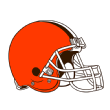
1. Cleveland Browns
Sam Darnold, QB, USC*
The Browns have a really good chance to have two picks in the top 10 of this draft. With the No. 1 pick, they must address their QB situation. I believe Rosen is the more polished quarterback right now, but Darnold has the higher ceiling at the next level. We've spent a lot of time focusing on Darnold's questionable decision-making and poor footwork (as well as his being turnover prone), but that was behind a porous offensive line and with a pass-catching corps with a lot of youth. Darnold played very well down the stretch, with nine TDs and only two INTs in his final five games. It isn't easy to turn down guaranteed money and the potential of being the No. 1 pick, but most talent evaluators think he'd benefit long-term from another year at USC. Darnold will have to make a difficult decision after the Cotton Bowl.

2. New York Giants
Josh Rosen, QB, UCLA*
This is another team with a lot of holes, but none is more glaring than at QB. Eli Manning will be 37 at the start of the next season, and the Giants' offense hasn't scored 30 points in a game since the 2015 season (30 straight games). Davis Webb hasn't been able to get on the field, and Geno Smith isn't the long-term answer at the position. Rosen outplayed Darnold in their recent matchup, and I came away impressed from watching him from the sideline. Rosen is the most NFL-ready QB in this class. The biggest challenge for him will be selling teams on his love/need for the game and his "coachability."
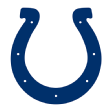
3. Indianapolis Colts
Bradley Chubb, DE, NC State
This team has needs all over, but it is one of the few in the top 10 that should be set at QB, with a (presumably) healthy Andrew Luck coming back next season. Without an offensive tackle worthy of such a high pick, I'm looking for edge help here. Chubb has a great skill set and a nonstop motor, and he has played his way into being a top-10 pick. He is a plug-and-play starter.
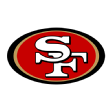
4. San Francisco 49ers
Minkah Fitzpatrick, S, Alabama*
Saquon Barkley could make sense here, but the 49ers have Matt Breida and could re-sign pending free agent Carlos Hyde. Just like his dad did throughout his career, Shanahan has always believed in his ability to identify RB talent that fits his system in later rounds; I'm guessing he and John Lynch will employ a similar strategy. The 49ers have invested heavily on the defensive line in recent drafts, but they need an infusion of talent in the secondary. Fitzpatrick is a true shutdown cornerback who has the versatility to play safety as well.
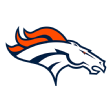
5. Denver Broncos
Josh Allen, QB, Wyoming*
Even after taking Paxton Lynch No. 26 overall in 2016, the Broncos are clearly still in need of a franchise QB. Lynch has thrown only 97 passes in two seasons, and he was beaten by Trevor Siemian for the starting QB spot this season. If Denver doesn't address the position in free agency, Allen should be the pick. There's no question that he struggled this season at Wyoming and needs to improve his decision-making, but he lost four of his skill position players from 2016 to the NFL. Allen has an elite arm and is a physical freak in terms of his skill set. His stock should rise in the postseason process.

6. Cleveland Browns (from Texans)
Saquon Barkley, RB, Penn State*
The Browns have plenty of needs but can afford a luxury pick after taking their QB at No. 1. While Isaiah Crowell and Duke Johnson are a nice pairing, Barkley is a far superior player to both. My No. 2 overall prospect, Barkley is clearly the best running back in college football. He's also the best running back to come out of college since Adrian Peterson, and he would do well behind Cleveland's strong offensive line.
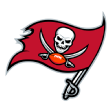
7. Tampa Bay Buccaneers
Clelin Ferrell, DE, Clemson*
There is still some hope for an edge rush in Tampa Bay with Noah Spence (on injured reserve), but the Bucs are dead last in the NFL with 17.0 sacks this season, and the defense has been porous (31st in total points). Ferrell is a hard worker, and the light has come on recently. He has been steadily rising up my board after a terrific performance against Syracuse (3.5 sacks, 5.5 TFL) and is explosive off the edge. A third-year sophomore, he could also return to Clemson.
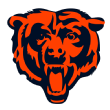
8. Chicago Bears
Calvin Ridley, WR, Alabama
Mitchell Trubisky has had an inconsistent rookie campaign, but the Bears have been plagued by injuries at the wide receiver position in recent years. Ridley is the clear top wideout in this class, with outstanding foot speed and good acceleration. He has averaged 16.2 yards per catch this season, but his stats in Alabama's run-heavy offense don't reflect his true talent.
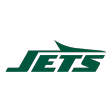
9. New York Jets
Arden Key, DE, LSU*
The Jets are another QB-needy team, but in this mock, the top three QBs are all already off the board. This is a spot where Baker Mayfield could be considered (or Allen if he's still available). The pass rush needs help, though, and Key is the most talented natural edge rusher in the draft. He left LSU this summer for personal reasons and has been banged up this season (only 4.0 sacks), so his draft stock could slip a bit, but the talent is there.
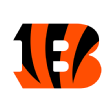
10. Cincinnati Bengals
Connor Williams, OT, Texas*
The Bengals have had a disappointing season, and the offensive line is a big reason for that. Cedric Ogbuehi and Jake Fisher (out for the season with an irregular heartbeat) haven't played up to their draft potential, and Cincinnati is in the bottom third in sacks allowed (33) after giving up 41 last season. Guard Quenton Nelson could help here, but Williams is the best offensive lineman and is a better value proposition at No. 10.
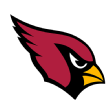
11. Arizona Cardinals
Mike McGlinchey, OT, Notre Dame
This is another potential landing spot for Baker Mayfield, as Carson Palmer's status for the 2018 season is unknown. But if it's not QB (or CB), offensive line makes sense for a Cardinals team that has allowed the second-most sacks (44) in the NFL this season and needs upgrades at several spots. McGlinchey doesn't have elite tools, but he has good experience and is a well-rounded player. He is a high-floor pick.
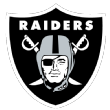
12. Oakland Raiders
Denzel Ward, CB, Ohio State*
The Oakland passing defense has been a sieve this season, allowing 7.7 yards per attempt (27th), and 2017 first-round pick Gareon Conley is still an unknown after playing only two games this season. Ward lacks ideal starting experience but has been exceptional this season at Ohio State. He's the best pure man-to-man cover corner in this class.

13. Washington Redskins
Derwin James, S, Florida State*
This is one of the tougher picks to predict, as the direction will be dictated by what happens with Kirk Cousins. If he's back, the best player on the board is James, who is an extremely versatile safety and will likely test well at the combine. In a division with Alshon Jeffery, Odell Beckham Jr. and Dez Bryant at wide receiver, you can't have enough secondary help.
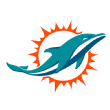
14. Miami Dolphins
Quenton Nelson, G, Notre Dame*
Guard is a glaring need for the Dolphins, who need to protect whomever is at QB and get more push in the running game. Nelson is the most NFL-ready offensive lineman in this class and a road-grader (listed at 6-foot-5, 325 pounds). He's ready to start right away.
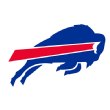
15. Buffalo Bills
Roquan Smith, LB, Georgia*
Another team with potential QB issues, we'll know more about the Bills' commitment to Tyrod Taylor (and Nathan Peterman) after this season and free agency. Linebacker is another clear area of need, though, and Smith is the most athletic off-the-line linebacker in this class. A true sideline-to-sideline player, he can do it all and is a perfect fit for the modern NFL.
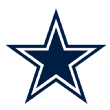
16. Dallas Cowboys
Christian Wilkins, DT, Clemson*
The Cowboys have generated good pressure up front, thanks to DeMarcus Lawrence's 13.5 sacks, but he'll be a free agent. Last year's first-round pick, Taco Charlton, should help as well, but the Cowboys need to bolster the interior of that defensive line. Wilkins has experience both inside and outside on an outstanding Clemson D-line, but I believe his best fit is inside as a 3-technique. He has the foot speed and quick hands to slip blocks and is a stout run-defender.
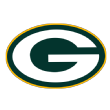
17. Green Bay Packers
Harold Landry, OLB, Boston College
Depending on what happens with pending free agent Davante Adams, wide receiver could be a need here. I'm going defense for Green Bay, though. Landry was my No. 4 prospect going into the season, but he might fall in the draft a bit due to an injury-riddled senior season. He is a naturally gifted edge rusher who led the nation in 2016 with 16.5 sacks.
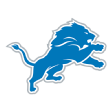
18. Detroit Lions
Tremaine Edmunds, DE/OLB, Virginia Tech*
Detroit has plenty of needs on defense but must be encouraged by the play of 2017 first-round LB Jarrad Davis. Regardless of whether the Lions re-sign pending free agent Ezekiel Ansah, Detroit needs more edge rushers. Edmunds has the versatility to cover and rush the passer, and he is a gifted athlete at 6-foot-5, 250 pounds. He'll likely test well at the combine.
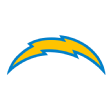
19. Los Angeles Chargers
Baker Mayfield, QB, Oklahoma
Orlando Brown is an option at offensive tackle here, but this is a good time for the Chargers to take a successor to 36-year-old Philip Rivers. Los Angeles passed on Patrick Mahomes and Deshaun Watson last draft, but Mayfield is too intriguing to pass on here. Perhaps no prospect has improved his stock more in 2017 than Mayfield, who was my ninth-ranked QB coming into the season, with a midround grade. The Heisman winner is an exceptional leader and could play himself into the first round with a good showing in the College Football Playoff.
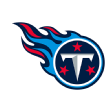
20. Tennessee Titans
Josh Jackson, CB, Iowa*
The Titans have spent a lot of recent draft capital on the offensive side of the ball, so I'm looking defense here. They need an edge rusher, but there isn't one to match the spot, so I'll look to the secondary. Adoree' Jackson has looked the part, but Tennessee needs more help on the outside. Josh Jackson is a long CB with natural cover ability and tremendous ball skills. He flashed with three INTs against Ohio State.

21. Buffalo Bills (from Chiefs)
Vita Vea, DT, Washington*
After trading Marcell Dareus to Jacksonville midseason, Buffalo's run defense has suffered. Listed at 6-foot-4, 346 pounds, Vea is a former high school running back and an absolute block-eater in the middle of Washington's defense. However, he also has the quickness and athleticism to get into the backfield. He could continue to rise with an impressive combine performance.
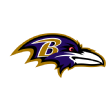
22. Baltimore Ravens
Christian Kirk, WR, Texas A&M*
Former first-round pick Breshad Perriman hasn't been able to stay on the field, and this offense really lacks playmakers. Kirk has been inconsistent, but he has the speed to take the top off a defense. He is also a great punt returner.
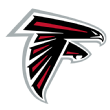
23. Atlanta Falcons
Ronnie Harrison, S, Alabama
Help on the defensive line is an option with Dontari Poe and Courtney Upshaw both free agents and Derrick Nnadi and Mo Hurst still available. However, in today's NFL, you can't have enough playmakers in the secondary. Harrison is an underrated prospect and has star potential in the NFL at the free safety position. He has been all over the field for a very good Alabama defense.
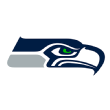
24. Seattle Seahawks
Derrius Guice, RB, LSU*
Seattle has seemingly had a revolving door at RB and needs some stability at the position to take pressure off Russell Wilson. Guice definitely isn't Leonard Fournette, but he has great quickness and the ability to break tackles. He dealt with some nagging injuries but has been a workhorse for LSU down the stretch, averaging 22 carries and 132 yards per game in his past six. Offensive line is also an option here for the Seahawks.
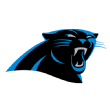
25. Carolina Panthers
Orlando Brown, OT, Oklahoma*
Carolina is another team that is looking for an edge rusher, but it might struggle with value here. Brown is the son of the late Orlando "Zeus" Brown, and he played left tackle at Oklahoma, but I think he might be better suited at RT in the NFL. He has tremendous talent but will benefit from shedding some weight and improving his foot quickness. He would give Carolina some insurance for Matt Kalil.

26. Los Angeles Rams
Billy Price, G/C, Ohio State
A plug-and-play starter, Price will help an improved Rams offense line on the inside. A four-year starter, Price is playing center for the Buckeyes this season, but I see him at guard for Los Angeles. He should be a steady starter.
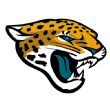
27. Jacksonville Jaguars
Courtland Sutton, WR, SMU*
The Jaguars need help at tight end and potentially quarterback, but there aren't any worthy of being drafted here, in my opinion. Sutton would offer another pass-catching weapon for Blake Bortles (or a new QB) to go with that ferocious defense.
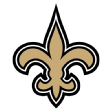
28. New Orleans Saints
Mo Hurst, DT, Michigan
New Orleans could use more depth and versatility on an improving defensive line, and Hurst would be a good value at this point in the draft. The Saints could also go for Mayfield here if he's still available.
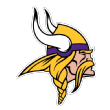
29. Minnesota Vikings
Martinas Rankin, OT, Mississippi State
The depth of this roster is showing this season, as Case Keenum has stepped in at QB, and the Vikings haven't missed a beat. There aren't many glaring holes on this team, but Minnesota could still use reinforcements on the offensive line. A former JUCO transfer, Rankin performed well against good SEC competition.
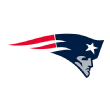
30. New England Patriots
Ben Banogu, DE/OLB, TCU
Bill Belichick loves to collect versatile edge defenders, and Banogu fits the bill. A former transfer from Louisiana Monroe, he didn't get much national attention this season but was always around the ball on the tapes I studied and was highly productive (15.5 TFL, 8.5 sacks).
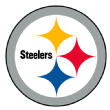
31. Pittsburgh Steelers
Dallas Goedert, TE, South Dakota State*
This is a bit of a reach for the top tight end in this class -- I have a mid- to late-second-round grade on him -- but Goedert is an underrated talent who has dominated his small-school competition. He has the athletic ability to give linebackers issues, and his size (6-foot-4, 258 pounds) is trouble for CBs. The postseason process will be big for him to prove he belongs.
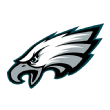
32. Philadelphia Eagles
Rashaan Evans, LB, Alabama
The Eagles have one of the most complete rosters in the NFL, though offensive tackle could be an issue if 35-year-old Jason Peters isn't the same coming back from his knee injury. Another versatile linebacker such as Evans, who has had a strong senior campaign, is a good pick to help bolster an elite defense.
What can NBA teams learn from Kuzma and Bell in the next draft?
Kyle Kuzma (No. 27 overall, a pick that was included in the D'Angelo Russell trade) and Jordan Bell (No. 38 overall, sold to the Warriors from the rebuilding Bulls) have been two of the biggest steals from the 2017 NBA draft.
How has each prospect outplayed his respective draft slot and what can we learn from both Bell and Kuzma about draft picks moving forward?
They both can teach NBA front offices and scouts different lessons.
Kyle Kuzma: Improvement and opportunity
Kuzma's emergence is largely due to a combination of impressive skill development and situational factors playing for a young Lakers team in need of offensive firepower. The fact that the former Utah forward is more productive as an NBA rookie than he was as a college junior speaks to his steady improvement, the vast difference between the often clunky college game and the spacious NBA and the importance of having a long leash to play through mistakes.
Saying a player "has really improved" is often a way for scouts or talent evaluators to avoid owning up to missing on a prospect, but given Kuzma's starting point and hectic road to the NBA, his skill progression is truly the main reason for his ascension.
"A lot of NBA scouts were at practice and our games -- it's not like they didn't see Kyle," said Utah associate head coach Andy Hill. "I think he surprised a lot of people in his progression and how quickly he's developed."
To put into context how impressive Kuzma's productivity really is, here's a look at his path from unheralded high school recruit to Lakers' leading scorer by age 22.
High school and prep school years
A late bloomer, Kuzma had little to no buzz on the college recruiting scene through three years at Burton Bentley High School, with only an offer from Detroit Mercy. Dominating middling competition yet receiving little collegiate interest, the former guard turned big wing left Burton for La Jolla Prep near San Diego after his junior season with the thought of reclassifying to the 2014 class and gaining exposure.
However, Kuzma's experience at La Jolla Prep was cut short due to lacking infrastructure. Left with little recruitment and nowhere to play or study, the ever-eager forward emailed Rise Academy head coach Vin Sparacio a grainy video that showed the then 6-foot-5 Kuzma shooting 3s rebounding, and throwing the ball off the wall to himself at the YMCA in Flint, Michigan.
"At the prep level if you're 6-5, 6-6, we need that, you're coming," Sparacio said.
Kuzma showed up in Philadelphia standing 6-5, 170 pounds soaking wet, with a "stupid Jersey Shore, Pauly D haircut," Sparacio said. "We get into the gym and ... soft. 3-point to 3-point line. I couldn't stand him. First three months, I couldn't stand him. I didn't mess with him." Kuzma used the same word.
"Soft, I was really soft," he said. "I was a totally different player. Back then I was 3-point line to 3-point line. Would never rebound. Couldn't defend nothing. It opened my eyes really. Playing prep school, you're playing all the top competition. That really kind of helped my development to see where I needed to be."
Over the course of his first month in Philly, the revved-up Kuzma would hound Sparacio about contacting schools like Quinnipiac, Oakland or Coastal Carolina. Sparacio preached patience, and Kuzma began to channel that energy toward the weight room and improving on the floor. A host of high majors eventually came knocking with offers, but Kuzma committed to Utah. The ultra-confident Kuzma showed up as a grayshirt -- meaning he wasn't on the official roster and couldn't even practice with the team due to accreditation issues at Rise -- and was regularly clowned for talking about playing in the NBA while donning Shaq-brand shoes, having not yet played a college game.
"It was 15 on 1 in the locker room," said former Utah teammate Austin Eastman. Delon Wright and former Utah guard Brandon Taylor nicknamed Kuzma "league" because of his constant talk of playing in the NBA.
Early college production
After Kuzma's grayshirt year, he sent a Twitter message to skills trainer Clint Parks, who had a history of success working with players like Kawhi Leonard and Tony Snell.
"I looked him up and said, 'Man this kid has some talent. There's something there,'" said Parks, who now lives in Los Angeles and continues to work with Kuzma. "He just loved to work. His game has evolved just because he worked so hard. That's the root of everything that everyone's seeing right now from my opinion."
Unseen hours with Parks showed in spurts during Kuzma's first year eligible with the Utes, but most of his shining moments came in garbage time of blowouts, as he still struggled to secure a consistent spot in the rotation, playing only 8.2 minutes per game.
Kuzma made a big jump between his freshman and sophomore seasons. He started 33 of 35 games and showed enough talent for scouts to peg him as a long-term prospect worth tracking.
https://twitter.com/Mike_Schmitz/status/703660927699124224
 Mike Schmitz
Mike Schmitz✔@Mike_Schmitz
Kyle Kuzma is one of the most underrated prospects in the country IMO. Fluid catch & shoot 3, lefty finish, can get out and run at 6-9.
He scored 21 points in a two-point win over Duke. He went for 23 points on 12 shots in the Pac-12 tournament against USC. Kuzma's production was still extremely sporadic, though, as he scored five points or fewer in nine of 35 games. Despite showing his talent, Kuzma said that he lost confidence in his shot and finished the season at 26.5 percent from 3 and 60.4 percent from the free throw line while registering more turnovers than assists. Kuzma still impressed scouts enough to earn an invite to the Under Armour All-American camp in the summer -- his first major camp with an opportunity to showcase his wing skills outside of the more rigid Utah system.
"That was the first time really a lot of NBA personnel got to see me outside of a structure, to really play my own game," Kuzma said. "That was pretty big for me. It's a lot different from how I played at Utah and they're seeing that now too. At Utah we had a different type of system. Very controlled system. I had to post up and be a pick-and-roll type of player there. The NBA there's more space. It's a lot more freedom and I can really do everything I can do."
Junior year
As the go-to-guy on a middling Utah team, Kuzma solidified himself as a legitimate NBA prospect during his junior season, shooting the ball better, showing versatility in the open floor and adding more value on the backboards.

 Mike Schmitz
Mike Schmitz✔@Mike_Schmitz
Utah four man Kyle Kuzma getting shots up before the Utes take on Butler
Even so, he struggled a bit in big games early in the season. After shooting under 15 percent from 3 in eight games in November and December combined, Kuzma eventually caught fire from 3, and his improved shooting stroke opened up the rest of his game considerably. He shot over 38 percent from 3 in January, February and March (19 games), forcing harder closeouts, which allowed him to unleash the court vision he developed at a young age. Scouts and analytics types still questioned his shooting stroke, as he finished the season at 32.1 percent from 3 and 66.9 percent from the free throw line. If he wasn't making shots, teams worried a bit about his ability to impact the game in other areas given his sub-par defense and so-so rebounding, which still remain question marks for some pro personnel scouts moving forward.
Kuzma's torrid shooting pace continued through the combine and NBA draft workouts. He shut it down after one day of combine 5-on-5 play after he knocked down four triples and scored 20 points in 22 minutes in front of all 30 NBA teams, dropping in a sweeping sky hook for good measure. He shot the ball well in private workouts as well, but teams still weren't sold on him as a surefire first-round pick.
Present day
Fast forward to 35 games into his NBA career and Kuzma is leading Lakers in scoring while shooting 39.2 percent from 3 on 6.6 attempts per 40 minutes. He's second among all rookies in scoring and tied for second in 3-point makes per game.
He already has scored 30 or more points three times this season, while bigs drafted ahead of him such as Zach Collins, DJ Wilson, TJ Leaf, Tyler Lydon and Caleb Swanigan have all struggled to have an impact at the NBA level. His leap is largely due to his gym-rat mentality, skill development, never-ending confidence and opportunity under Luke Walton, especially when it comes to his shooting.
Catch and-shoot 3
Kuzma's refined 3-ball is the key ingredient to his offensive improvement. His mechanics are much more disciplined and compact at the NBA level, as he regularly catches in rhythm on the hop and releases with great fluidity. While most rookies struggle adjusting to the NBA line, Kuzma feels more comfortable as the extended distance forces him to stay disciplined with his mechanics from catch to finish.
He's streaky by nature, but with a 39.7 percent 3-point clip on 272 attempts between summer league, preseason and the regular season, Kuzma's shooting stroke appears here to stay.
Becoming a more consistent 3-point threat has opened up the rest of Kuzma's game, as scrambling defenders are now running him off the line rather than closing out short or arriving just in time to hand contest. Kuzma is comfortable attacking closeouts with long strides, mixing in whirling dervish spin moves and high-extension finishes from all different angles. He also employs exaggerated head and shot fakes to get defenders in the air, allowing him to stride it out to the rim or use his vision to be playmaker for teammates.
Kuzma showed glimpses of his ever-improving spot-up game while at Utah, scoring 1.068 points per possession on catch-and-shoot jumpers as a junior after failing to reach 0.7 PPP in such situations as a freshman and sophomore. Continuing to force defenders into hard closeouts will be key for Kuzma moving forward, as his shooting stroke is the key to unlocking the rest of his offensive game.
Shooting on the move
While Kuzma's catch-and-shoot game in Pac-12 play and throughout the pre-draft process suggested that he could develop into a plus spot shooter at the NBA level, it was hard for scouts to envision his on-the-move shooting developing the way it has. In three years at Utah, Kuzma shot only 6-of-39 on pull-up jumpers. He also used only 25 off-screen possessions and 10 pick-and-roll ball-handler possessions during his NCAA career. A lot of that is due to the role he played at Utah, but most of it is skill development.
Kuzma's added ability to sprint off of a screen into a jumper, create space with step backs out of quick-hitting actions, occasionally rise up into hang-dribble pull-ups and knock down one-foot runners are his greatest feats from an offensive development standpoint.
Thanks to his role at Utah, Kuzma already had the off-ball skills down pat. He's an instinctual cutter, he's comfortable as a roller, he has soft touch on floaters and his scoring instincts and frenetic energy allow him to get buckets without using too many dribbles. He also always has been fairly comfortable operating in the post.
As you can see in his 38-point performance against Houston, Kuzma has looked comfortable playing out of quick-hitting ball screens and at least getting to pull-ups off the bounce. He's not an elite ball handler, but his footwork is certainly a strength, especially when compared to other 4s in the NBA.
If Kuzma's able to truly build on a foundational skill set and eventually use the threat of a pull-up to set up hesitation drives and precision passes, he has a chance to be more than an off-ball microwave scorer, allowing coaches to use him both as a handler and screener. While he's a ways away from being a consistent shot creator and ball-screen player, his versatility and improving comfortability with the ball could make him a tough cover in 4-5 pick-and-roll situations.
Pro personnel scouts will surely be monitoring his progression in these areas as it could go a long way in dictating his ceiling.
What we can learn from Kuzma as a case study
Understand the starting point
It's imperative to have a strong feel for every prospect's starting point when developing a full-fledged evaluation. The college season -- and in Kuzma's case a three-year college career -- is too small of a sample to evaluate a prospect with an entire NBA career in mind. We have to understand where these prospects come from, what makes them tick and how all of that plays into the evaluation. In Kuzma's case, knowing of his rocky road to Utah and humble beginnings puts into perspective how impressive his resilience and improvement really is. To be making adult decisions as a teenager and voluntarily bouncing around from school to school in search of added exposure speaks to his self-confidence and will. NBA scouts want basketball junkies, and Kuzma's background and level of improvement certainly shows that he's exactly that.
It's also key to have a grip on what type of player he was before arriving at Utah. Late bloomers are gold in today's versatility-driven game, and knowing that Kuzma was a shot-making guard/wing at a young age could have eased scouts' concerns about whether he'd be able to develop into a reliable shooter.
Situational factors are key
College basketball and the NBA are virtually two different sports, and attending events like the Under Armour All-American Camp gives scouts a window into what players like Kuzma can do when freed of the sometimes-limiting college systems.
Watching Kuzma at Utah, he functioned more as a roller, finisher and post-up player for the majority of his career. Partially due to his own shortcomings, his leash was short, and the lack of spacing didn't give him much room to play to his strengths. We saw more and more glimpses of those skills as his career went on, and his leash got longer, but there wasn't quite enough now to anticipate it translating to the NBA with regularity. With the Lakers, he has been free to fire since summer league. He has developed an excellent relationship with the ultra-unselfish Lonzo Ball, who is looking for his fellow rookie nearly every time down the floor. Ball is a dream for an aggressive scorer like Kuzma, and the Lakers have been in dire need of a scoring punch all season, especially at the stretch-4 spot.
So the situational factors are two-fold. On one hand, it's important to understand the system that Kuzma was playing in at Utah when evaluating how his skill set fits in the NBA. Secondly, environment has also played a huge role in Kuzma's success thus far with the Lakers. Would Kuzmania be in full force if he were playing for a more rigid, defense-demanding coach like Stan Van Gundy or Tom Thibodeau? Situation shapes perceived success much more than we let on, which is valuable to keep in mind moving forward.
Never stop scouting
As easy as it is to write players off after a down year or two, that can often be a recipe for a missed evaluation. Instincts and first impressions certainly have a lot of value, but keeping an open mind can most definitely pay dividends when evaluating prospects like Kuzma.
Teams that wrote him off after he shot under 20 percent from 3 in the first two months of his junior season are probably kicking themselves at this point. Although it took him well into his junior season, Kuzma finally clicked as a jump shooter, and the rest of his game followed. He had an excellent pre-draft process as well, but teams still weren't ready to believe his level of improvement. We all want instant gratification, but scouting is a long play. Players have different development curves, and progress isn't always linear.
It's OK to shift opinions and rethink an initial evaluation, and Kuzma is a perfect example of why.
Jordan Bell: Perfect situational fit
Bell's success is more a product of fit than internal improvement or missed evaluations. His game was always quite black and white to scouts: explosive yet undersized shot-blocking big who can pass, run and dunk, yet not a skill-based scoring threat outside the charge circle. While Golden State is an ideal organization for virtually any draft prospect, the Warriors are truly one of the few teams where Bell's strengths are most accentuated, and his weaknesses most neutralized.
Despite earning 2017 Pac-12 Defensive Player of the Year honors at Oregon, Bell fell to No. 38 in the draft overall largely due to his sub-optimal size and length given his projected role. Even in a seemingly shrinking NBA, Bell's measurements -- 6-8½, 224 pounds with a 6-11½ wingspan and 8-8½ standing reach -- resembled that of a big wing or combo forward rather than a small-ball center. According to the DraftExpress measurements database, Bell's closest physical comparisons are Aaron Gordon (18.7 years old when measured), Richard Jefferson (21.0) and TJ Warren (20.7).
Given his role as a defensive stopper/finisher/distributor, it was easy for teams to wonder how effective Bell would be as a shot-blocker and interior defender at his size. Scouts questioned whether or not that defensive value significantly made up for some of his shortcomings as a scorer. Bell needed to find a team where he could function as a defensive rover and switch man while operating as a playmaking center on the offensive end. Theoretically, he would need to play with at least three or four shooters on the court at all times, while having a bigger, longer frontcourt mate next to him who could not only handle the DeMarcus Cousins-type of centers in a pinch, but also space the floor.
Enter the Golden State Warriors.
Golden State is one of the few teams that we knew would be willing to play Bell at his natural center position. According to Cleaning The Glass, Bell has played 74 percent of his minutes at the 5. No team in the NBA has as much offensive talent and shooting as the Warriors, so not being a threat to score outside of five feet isn't nearly the same hindrance it would be on another team, and Bell's passing value is well-suited for Steve Kerr's feel-based system.
Having guys like Draymond Green and even Kevin Durant be able to slide up and stonewall centers on occasion while spacing the floor offensively has allowed Bell to impact the game where he's most comfortable -- as a pick-and-roll switch man, perimeter defender, weakside shot-blocker, fly-in rebounder and facilitator. Though 31 games, Bell ranks 17th in the NBA in defensive real plus-minus and first among rookies. While not always the most dominant one-on-one post defender against size, he's an impactful defensive playmaker thanks to his tremendous quickness and pogo stick bounce.
Bell's ability to also sit down on the perimeter and defend virtually every position beyond the arc is also a perfect fit with the switch-happy Warriors. Although he can get a bit upright in his stance at times and doesn't always have the elite length to recover at the rim, Bell's feet are tremendous for his size and he's extremely quick off the floor.
On the offensive end, Bell is able to focus on using his explosiveness to sprint the floor in transition, chase down offensive rebounds and dive to the rim out of ball screens with tagging defenders worried about Durant, Stephen Curry and Klay Thompson spotting up beyond the arc. He's an Olympic level athlete, as you can see by his agility in transition. Bell had near record-setting athletic testing marks at the 2017 NBA draft combine, and that certainly has translated to game play thus far.
Given how spaced the floor is in the half court when Bell is at the 5, he's able to use his quick feet and leaping ability to dive hard and finish above the rim in a pinch.
When defenders do opt to play Bell as a roller, he can employ his impressive court vision to set up teammates.
Even when at the 4, Bell has been a valuable facilitator, regularly finding Zaza Pachulia out of high-low or short-roll situations. For what he lacks in spacing as a scorer, he makes up for as a facilitator, which allows him to play next to bigger-bodied centers like Pachulia for stretches, which helps Bell on the defensive end.
Bell is one of only two players in the NBA averaging at least 10 rebounds, five assists and three blocks per 40 minutes, with the other being lightly-used teammate David West. The combination of boxes that he checks are unique, as you don't often have players in his mold with his level of court vision, which is the main reason -- along with his experience -- that he has been such a seamless fit with the Warriors.
What is his upside?
The question with Bell among scouts was always about hit ceiling. As we've seen for stretches with the Warriors, he doesn't have the natural size to bang with more traditional back to-the-basket centers. Although he's allowing an impressive 0.679 points per chance in 31 possessions against post-ups -- according to Second Spectrum data -- Bell's shortcomings against bigger centers does show up at times.
Bell also wasn't always the most physical defensive rebounder at Oregon, and some of that has carried over to the NBA, as he's averaging a good-not-great 7.2 defensive rebounds per 40 minutes.
Can Bell develop into more than a backup small-ball center given some of his limitations? Regardless of his long-term potential, finding an instant-impact rookie on a championship frontrunner early in the second round is a major win for the Warriors front office, and Bell's switch-heavy, shot-blocking, pass-first style is certainly the way the NBA is trending, regardless of size.
What can we learn from Bell's success?
Moving forward, Bell gives hope to undersized, non-scoring centers who can switch, rim-protect and facilitate, as the NBA continues to trend toward quickness and skil. The key for teams is finding players in Bell's mold who can distribute, as there are hundreds of explosive, undersized 5s who can fly around and make plays defensively, but very few have the passing acumen of Bell.
The 22-year-old's court vision wasn't always on display at Oregon, as he finished with more turnovers than assists during his collegiate career, but he proved that he was clearly a plus-passer in settings like the Nike Skills Academy and the draft combine. There aren't all that many role players in Bell's mold, so it was hard to project him out to all 30 teams. But he's perfectly suited for the Warriors' current personnel, and Bob Myers and his staff did an excellent job identifying that, buying in for $3.5 million and thinking outside the box to draft a 6-9 center who can't score outside the paint.
As more teams try to work toward the Warriors' model with shooting at every position, there's room for prospects like Bell, who can function as the one non-scorer who adds value as a passer and defensive playmaker. While every team wants to hit home runs and find the next second-round star, hitting singles and doubles by pinpointing instant-impact college veterans like Bell goes a long way in building a championship franchise like the Warriors.
College basketball and the NBA are virtually two different sports, and attending events like the Under Armour All-American Camp gives scouts a window into what players like Kuzma can do when freed of the sometimes-limiting college systems.
Watching Kuzma at Utah, he functioned more as a roller, finisher and post-up player for the majority of his career. Partially due to his own shortcomings, his leash was short, and the lack of spacing didn't give him much room to play to his strengths. We saw more and more glimpses of those skills as his career went on, and his leash got longer, but there wasn't quite enough now to anticipate it translating to the NBA with regularity. With the Lakers, he has been free to fire since summer league. He has developed an excellent relationship with the ultra-unselfish Lonzo Ball, who is looking for his fellow rookie nearly every time down the floor. Ball is a dream for an aggressive scorer like Kuzma, and the Lakers have been in dire need of a scoring punch all season, especially at the stretch-4 spot.
So the situational factors are two-fold. On one hand, it's important to understand the system that Kuzma was playing in at Utah when evaluating how his skill set fits in the NBA. Secondly, environment has also played a huge role in Kuzma's success thus far with the Lakers. Would Kuzmania be in full force if he were playing for a more rigid, defense-demanding coach like Stan Van Gundy or Tom Thibodeau? Situation shapes perceived success much more than we let on, which is valuable to keep in mind moving forward.
Never stop scouting
As easy as it is to write players off after a down year or two, that can often be a recipe for a missed evaluation. Instincts and first impressions certainly have a lot of value, but keeping an open mind can most definitely pay dividends when evaluating prospects like Kuzma.
Teams that wrote him off after he shot under 20 percent from 3 in the first two months of his junior season are probably kicking themselves at this point. Although it took him well into his junior season, Kuzma finally clicked as a jump shooter, and the rest of his game followed. He had an excellent pre-draft process as well, but teams still weren't ready to believe his level of improvement. We all want instant gratification, but scouting is a long play. Players have different development curves, and progress isn't always linear.
It's OK to shift opinions and rethink an initial evaluation, and Kuzma is a perfect example of why.
Jordan Bell: Perfect situational fit
Bell's success is more a product of fit than internal improvement or missed evaluations. His game was always quite black and white to scouts: explosive yet undersized shot-blocking big who can pass, run and dunk, yet not a skill-based scoring threat outside the charge circle. While Golden State is an ideal organization for virtually any draft prospect, the Warriors are truly one of the few teams where Bell's strengths are most accentuated, and his weaknesses most neutralized.
Despite earning 2017 Pac-12 Defensive Player of the Year honors at Oregon, Bell fell to No. 38 in the draft overall largely due to his sub-optimal size and length given his projected role. Even in a seemingly shrinking NBA, Bell's measurements -- 6-8½, 224 pounds with a 6-11½ wingspan and 8-8½ standing reach -- resembled that of a big wing or combo forward rather than a small-ball center. According to the DraftExpress measurements database, Bell's closest physical comparisons are Aaron Gordon (18.7 years old when measured), Richard Jefferson (21.0) and TJ Warren (20.7).
Given his role as a defensive stopper/finisher/distributor, it was easy for teams to wonder how effective Bell would be as a shot-blocker and interior defender at his size. Scouts questioned whether or not that defensive value significantly made up for some of his shortcomings as a scorer. Bell needed to find a team where he could function as a defensive rover and switch man while operating as a playmaking center on the offensive end. Theoretically, he would need to play with at least three or four shooters on the court at all times, while having a bigger, longer frontcourt mate next to him who could not only handle the DeMarcus Cousins-type of centers in a pinch, but also space the floor.
Enter the Golden State Warriors.
Golden State is one of the few teams that we knew would be willing to play Bell at his natural center position. According to Cleaning The Glass, Bell has played 74 percent of his minutes at the 5. No team in the NBA has as much offensive talent and shooting as the Warriors, so not being a threat to score outside of five feet isn't nearly the same hindrance it would be on another team, and Bell's passing value is well-suited for Steve Kerr's feel-based system.
Having guys like Draymond Green and even Kevin Durant be able to slide up and stonewall centers on occasion while spacing the floor offensively has allowed Bell to impact the game where he's most comfortable -- as a pick-and-roll switch man, perimeter defender, weakside shot-blocker, fly-in rebounder and facilitator. Though 31 games, Bell ranks 17th in the NBA in defensive real plus-minus and first among rookies. While not always the most dominant one-on-one post defender against size, he's an impactful defensive playmaker thanks to his tremendous quickness and pogo stick bounce.
Bell's ability to also sit down on the perimeter and defend virtually every position beyond the arc is also a perfect fit with the switch-happy Warriors. Although he can get a bit upright in his stance at times and doesn't always have the elite length to recover at the rim, Bell's feet are tremendous for his size and he's extremely quick off the floor.
On the offensive end, Bell is able to focus on using his explosiveness to sprint the floor in transition, chase down offensive rebounds and dive to the rim out of ball screens with tagging defenders worried about Durant, Stephen Curry and Klay Thompson spotting up beyond the arc. He's an Olympic level athlete, as you can see by his agility in transition. Bell had near record-setting athletic testing marks at the 2017 NBA draft combine, and that certainly has translated to game play thus far.
Given how spaced the floor is in the half court when Bell is at the 5, he's able to use his quick feet and leaping ability to dive hard and finish above the rim in a pinch.
When defenders do opt to play Bell as a roller, he can employ his impressive court vision to set up teammates.
Even when at the 4, Bell has been a valuable facilitator, regularly finding Zaza Pachulia out of high-low or short-roll situations. For what he lacks in spacing as a scorer, he makes up for as a facilitator, which allows him to play next to bigger-bodied centers like Pachulia for stretches, which helps Bell on the defensive end.
Bell is one of only two players in the NBA averaging at least 10 rebounds, five assists and three blocks per 40 minutes, with the other being lightly-used teammate David West. The combination of boxes that he checks are unique, as you don't often have players in his mold with his level of court vision, which is the main reason -- along with his experience -- that he has been such a seamless fit with the Warriors.
What is his upside?
The question with Bell among scouts was always about hit ceiling. As we've seen for stretches with the Warriors, he doesn't have the natural size to bang with more traditional back to-the-basket centers. Although he's allowing an impressive 0.679 points per chance in 31 possessions against post-ups -- according to Second Spectrum data -- Bell's shortcomings against bigger centers does show up at times.
Bell also wasn't always the most physical defensive rebounder at Oregon, and some of that has carried over to the NBA, as he's averaging a good-not-great 7.2 defensive rebounds per 40 minutes.
Can Bell develop into more than a backup small-ball center given some of his limitations? Regardless of his long-term potential, finding an instant-impact rookie on a championship frontrunner early in the second round is a major win for the Warriors front office, and Bell's switch-heavy, shot-blocking, pass-first style is certainly the way the NBA is trending, regardless of size.
What can we learn from Bell's success?
Moving forward, Bell gives hope to undersized, non-scoring centers who can switch, rim-protect and facilitate, as the NBA continues to trend toward quickness and skil. The key for teams is finding players in Bell's mold who can distribute, as there are hundreds of explosive, undersized 5s who can fly around and make plays defensively, but very few have the passing acumen of Bell.
The 22-year-old's court vision wasn't always on display at Oregon, as he finished with more turnovers than assists during his collegiate career, but he proved that he was clearly a plus-passer in settings like the Nike Skills Academy and the draft combine. There aren't all that many role players in Bell's mold, so it was hard to project him out to all 30 teams. But he's perfectly suited for the Warriors' current personnel, and Bob Myers and his staff did an excellent job identifying that, buying in for $3.5 million and thinking outside the box to draft a 6-9 center who can't score outside the paint.
As more teams try to work toward the Warriors' model with shooting at every position, there's room for prospects like Bell, who can function as the one non-scorer who adds value as a passer and defensive playmaker. While every team wants to hit home runs and find the next second-round star, hitting singles and doubles by pinpointing instant-impact college veterans like Bell goes a long way in building a championship franchise like the Warriors.
Ranking the new group of NFL quarterbacks to build around
Seven quarterbacks established themselves as NFL starters in 2017. No, I'm not talking about Carson Wentz and Dak Prescott. I'm talking about rookie QBs who started a bunch of games (Deshaun Watson, Mitchell Trubisky and DeShone Kizer). I'm talking about veterans who took hold of their chance to start (Case Keenum and Jimmy Garoppolo). And I'm talking about young guys with high ceilings who showed they can win in this league (Jared Goff and Jacoby Brissett).
So how would I rank them in terms of whom I'd start my team with? I'm talking about projecting their future upside and putting them in order from 1 to 7. It starts in Houston, in my opinion, with the rookie whose spectacular season was cut short:
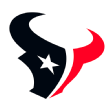
1. Deshaun Watson, Houston Texans
2017 stats: 126-of-204 passing (61.8 percent) for 1,699 yards with 19 touchdowns, 8 interceptions in 7 games (6 starts); 81.9 Total QBR
What I saw this season: Watson made some rookie throws and was at times baited into trouble by veteran defensive backs. Those are correctable moments, however. What simply can't be coached is Watson's playmaking talent or the unique intangibles he brings to the field. Playing in a Texans system that smartly adapted to maximize his skill set, the No. 12 overall pick showed the ability to move defenders with his eyes in the pocket, make off-schedule plays and use his athleticism to create stress for defenders. That allowed Houston to use the play-action game, quick passing and quarterback-designed runs to light up opposing defenses before Watson went down with a knee injury.
Why he's ranked here: The ACL injury has to be discussed here, but Watson has been through a knee rehab before, and he's only 22. Age is a huge part of his high ceiling -- it's why he's No. 1 on this list. He'll come back strong next season. Watson is a perfect fit for the modern NFL game with movement schemes, run-pass options and the ability to attack all three levels of the field from multiple throwing platforms. Plus, I love watching him compete. That's why Watson can play through in-game adversity and come back to drop a dime over the top of the secondary. And he's just getting started. You want upside? This is it. And this is the young quarterback I'd build my team around.

2. Jimmy Garoppolo, San Francisco 49ers
2017 stats: 120-of-178 passing (67.4 percent) for 1,560 yards with 7 touchdowns, 5 interceptions in 6 games (5 starts); 80.6 Total QBR
What I saw this season: After being traded in the middle of the season, Garoppolo made a smooth transition into Kyle Shanahan's offense. Yes, that system is legit and it will create some open throwing windows. But to have a QB come in and show total command of the offense -- the Niners went 5-0 in Garoppolo's starts -- in that short of a time frame? Super impressive. Now, add in Garoppolo's lightning-quick release, the on-point ball placement and mobility. Those are traits that apply to any NFL system. Yes, it's still a small sample size, but there is no question about Garoppolo's ability to attack tight windows, manipulate defenders with his eyes or make stick throws on the move. His tape passes the test. And I expect him to be better with more time learning Shanahan's concepts. Shanahan coached Matt Ryan to an MVP season in his second year with the Falcons.
Why he's ranked here: At 26, Garoppolo hasn't yet entered his prime, but he showcases so many traits of an experienced, veteran quarterback. That's the poise, decision-making and leadership in critical game moments. Plus, how can we not see the seamless fit with Shanahan? The middle-of-the-field throws, the deep-ball opportunities off play-action or the leveled targets when Garoppolo pulls the ball on boot action. With Shanahan's playcalling, and Garoppolo's advanced skill set to dice up coverages, the expectations should be sky-high in San Francisco. It's why 49ers fans are pumped heading into 2018.

3. Jared Goff, Los Angeles Rams
2017 stats: 296-of-477 passing (62.1 percent) for 3,804 yards with 28 touchdowns and 7 interceptions in 16 starts; 52.1 Total QBR
What I saw this season: Goff started only seven games as a rookie, and there were still questions about him under former coach Jeff Fisher's staff. That's why his second-year jump was unexpected, though there was a reason he was picked No. 1 overall. Give credit to new Rams coach Sean McVay, though, for developing his quarterback in a system that creates positive opportunities. And that allowed us to see Goff's skill set at work. I love the arm talent, the ability to put touch on the ball and his improvement in field vision. Goff has the accuracy to make bucket throws over the top and thread the ball between defenders. Plus, think about his footwork and the growth we've seen in Year 2. This guy looks like a different player when resetting his throwing platform. And like Garoppolo, he is playing in a system that will highlight his strengths.
Why he's ranked here: Goff is still only 23, and I expect even more signs of development after another offseason with McVay. He is just getting started. But I also want Goff to grow as a passer when things are taken away, like what we saw in the wild-card loss to the Falcons. Goff can improve his pocket management and show the ability to respond to defensive game plans that limit the top routes he wants to throw. I don't think Goff is near his ceiling yet. And that's a major positive when talking about upside. With McVay running things in L.A., expect Goff to take another step forward next season.

4. Case Keenum, Minnesota Vikings
2017 stats: 325-of-481 passing (67.6 percent) for 3,547 yards with 22 touchdowns and 7 interceptions in 15 games (14 starts); 69.6 Total QBR
What I saw this season: Keenum had made 24 NFL starts across four seasons prior to the 2017 season, but there was a reason he signed a one-year, $2 million deal with the Vikings last offseason to back up Sam Bradford. No teams saw the former undrafted free agent as a starter. But he was thrust into the mix as the Vikings' starter because of Bradford's knee injury in Week 1, and Keenum used that opportunity to produce legit numbers in Pat Shurmur's offense. With the arm talent to challenge defenses vertically inside of the numbers, the movement skills to deliver the rock outside of the pocket and the veteran moxie to make things happen, Keenum was mentioned as a possible MVP candidate late in the season. Look, the 6-foot-1 Keenum has some sandlot ball to his game. And I like that. This guy can create when things break down, and he's smart with the ball. He was accurate on the tape I watched and played within the system to put pressure on opposing defenses.
Why he's ranked here: Keenum will turn 30 next month, so his upside is obviously lower than that of Watson, Garoppolo and Goff. Plus, Shurmur has to get some of the credit for Keenum's production. The Vikings offensive coordinator did an excellent job in drawing up the game plan. But Keenum is going to hit free agency -- if the Vikings don't lock him up long term -- with several suitors. And he should be paid starting money on the market. He's a guy I would target if my squad needs a veteran leader at the position. The 2017 tape tells the story with Keenum. He's going to fit in multiple schemes based on his skill set and ability to create -- and he's going to get paid.

5. Mitchell Trubisky, Chicago Bears
2017 stats: 196-of-330 passing (59.4 percent) for 2,193 yards with 7 touchdowns and 7 interceptions in 12 starts; 29.2 Total QBR
What I saw this season: We didn't get to see the entire picture with Trubisky, who played in an extremely limited offense in Chicago. From the game plan to the lack of weapons at wide receiver, the 2017 campaign was more about game reps for the Bears quarterback. And that includes the rookie mistakes. Trubisky did show us flashes of some real upside, however. Just look at his ability to rip the ball between the numbers, the accuracy when moving to the edge of the pocket and the athleticism to pull the ball or produce on QB-designed runs. With a solid frame to work inside of the pocket and the talent to make those off-schedule plays when things go south, the No. 2 overall pick has a pretty high ceiling. He's tough too. And with the Bears making a coaching change, Trubisky should be in a position to play in a more QB-friendly offense under new coach Matt Nagy. That's why I'm expecting a sizable leap in his development in 2018.
Why he's ranked here: Given his limited starts at North Carolina (13) and the 12 games he played this season in that limited system, the book is still wide-open on Trubisky. Even with those flashes he showed and the athletic skill set that fits today's NFL, his grade is still incomplete. Trubisky will be put in a position to play more aggressive football in a modern system under Nagy, however. Think of the core West Coast routes, play-action and the college spread concepts that will cater to Trubisky's overall game. And because he is just 23, the Bears can go all-in with Trubisky: Upgrade the talent around him and begin to truly develop his skill set as a pro passer.

6. Jacoby Brissett, Indianapolis Colts
2017 stats: 276-of-479 passing (58.8 percent) for 3,098 yards with 13 touchdowns and 7 interceptions in 15 starts; 37.9 Total QBR
What I saw this season: In only his second NFL season, Brissett had to learn the Colts' system on the fly after being traded to Indianapolis leading up to Week 1. And given those circumstances, we have to look at the positives to the game of the 2016 third-round pick. He has the big frame to hang in the pocket, some touch on boundary throws over the top of underneath defenders and the arm talent on deep inside cuts. He can sling the rock on the dig route/skinny post. Plus, he plays with good body control. Yes, Brissett isn't a blazer when he pulls down the ball to run. But he has enough wiggle to his game to make a defender miss, along with the toughness to take a hit. What would I like to see? A quicker process in the pocket. Brissett was sacked 52 times in 2017, the most in the league. And while those aren't all on him, he has to get the ball out with more speed, while also developing some touch throughout the entire route tree.
Why he's ranked here: Brissett, 24, is coming off his first season as a No. 1 quarterback. With more reps and some tweaks to his release/mechanics, he has the talent base to develop in an offensive system built on rhythm and timing. Footwork, eyes and ball placement -- those are the next steps for Brissett's growth. But where does that happen? With Andrew Luck expected to return healthy for the Colts next season, Brissett is intriguing as a trade option. He is still on his rookie contract, with two more years left at less than a $1 million per season. And he brings 17 starts to the table. Yes, Brissett has areas of his game that need to improve. But after going back through the tape, there are a lot of positive traits here that can be developed. And I could see a team dealing for him this offseason.

7. DeShone Kizer, Cleveland Browns
2017 stats: 255-of-476 (53.6 percent) for 2,894 yards with 11 touchdowns and 22 interceptions in 15 starts; 29.6 Total QBR
What I saw this season: I can see why Kizer came off the board as a Day 2 pick in the 2017 draft. The rookie out of Notre Dame has a lot of raw talent. Just look at the velocity he can generate on the ball. Rockets. That can put him in a position to throw deep out cuts, attack a tight window up the seam or challenge the secondary down the field. And with that pro-ready 6-foot-4, 233-pound frame -- plus the mobility to skate away from trouble -- he has a lot of the tools that coaches want in terms of future development and upside. But Kizer was tossed into the mix in Cleveland when he wasn't quite ready to contribute, and he struggled to protect the ball, which is one of the most important things a quarterback has to do. Some of that can be attributed to his lack of touch and decision-making. I get that. But I also saw a young quarterback whose confidence was shaken by the coach's management of the depth chart at the position.
Why he's ranked here: I don't question that Kizer has upside. There is talent here to develop with coaching and more game time. The issue moving forward, and why I have Kizer ranked at the end of this list, comes down to opportunity in 2018. With the Browns making a front-office change -- and holding the Nos. 1 and 4 picks in the draft -- will Kizer get a shot to compete for the starting spot in Cleveland next season? Or is this a situation in which the Browns pick a QB early and roll with another rookie? Remember, so much of the development at this position comes down to the team situation and opportunity. And Kizer might not have the chance to get those much-needed reps in 2018.


